Hints Of Fall Color, And The Return Of Birds, Temporarily, At The Susquehanna Wetlands And River Lands
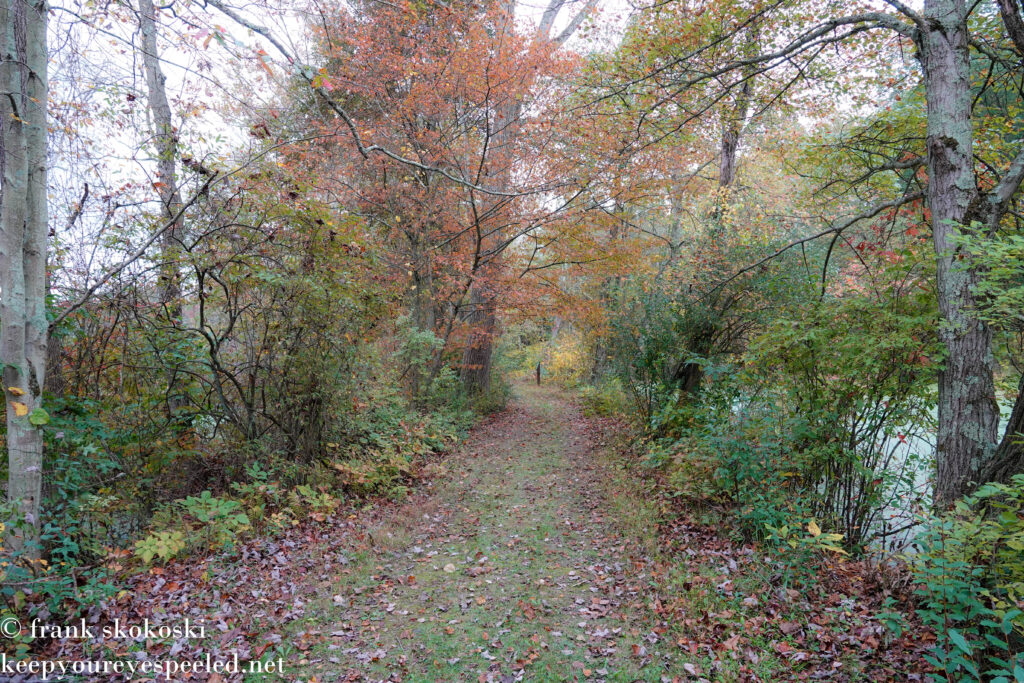
It was another cloudy, and unseasonably mild, morning when I decided to drive to the Susquehanna Wetlands and River Lands in Salem Township, Luzerne County last Sunday. As usual, before beginning my five mile hike in the wetlands area of the nature preserve I walked down to the banks of the Susquehanna River. The river was still high from our recent rains. Standing on the banks of the East Coast’s longest river I often reflect on the Native Americans who walked here before me, or canoed on the slow moving waters of this ancient river. 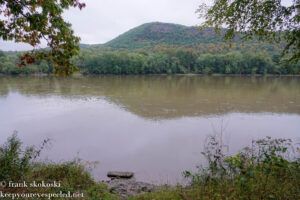
On Sunday I changed my routine a bit. I walked along the banks of the river, on the trail that followed the route of the ancient Great Warriors Path that was used by generations of Native Americans living in our area. Again, my mind reflected on the families of Native Americans who walked, possibly, under the same ancient oak trees that still live today. There were hints of Fall colors under these old trees on Sunday. 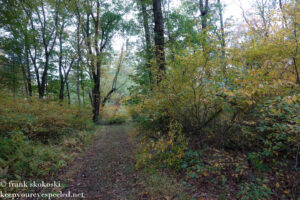
I took this path because I have been seeing two dozen wood ducks on one of the canals in the wetlands. Every time I approached they would quickly fly off before I could capture some photographs. On Sunday I thought I might sneak up on them from the opposite direction. I left the river and took a path to the main trail along the old Susquehanna Canal. However, as I quietly approached the wood ducks, I stepped on a branch and the quickly flew off, in the opposite direction of my approach . Some flew to the other side of a large pond where I was able to get these highly cropped photos. The male wood ducks have some of the most beautiful colors I have seen among all of the birds I have photographed. One of these weeks I hope to get some close up photos.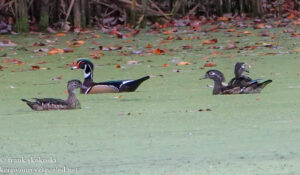
Continuing my walk along the ponds and canals I was hoping to see the river otters again, or at least a mink, muskrat or beaver. I didn’t see any of this aquatic mammals but I was surprised to hear the chatter of red-winged black birds echoing in the wetlands. The wetlands have been silent the past few weeks. These birds, and most of the song birds had already migrated south. However, this large flock of red-winged black birds must have been migrating from areas to our north. They filled the wetlands with their chatter. This is a male, 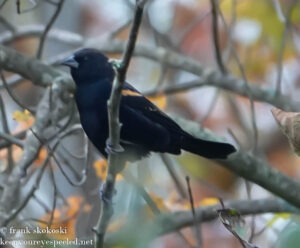
There was also a very large flock of American robins singing and fluttering through the trees along the trail. 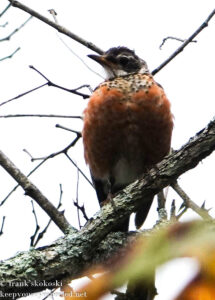
Looking up into the tree branches now I also saw a flock of yellow-rumped warblers,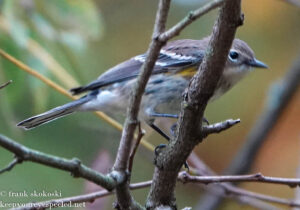
and a flock of white-throated sparrows.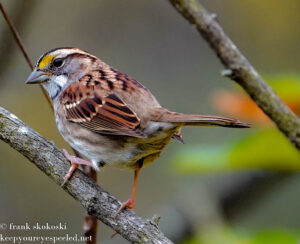
This white-throated sparrow was feeding on something it had found. 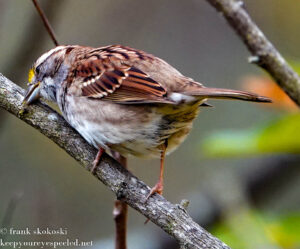
Unlike my last few visits the wetlands were filled with the singing and chattering of the migrating birds. It was nice to hear them one last time before they leave our area until their return in the Spring. I have recently learned that some of the white-throated sparrows may spend the Winter here in the wetlands. I hope so. As I continued my walk I saw a few chipmunks and squirrels scampering on the ground and in the trees.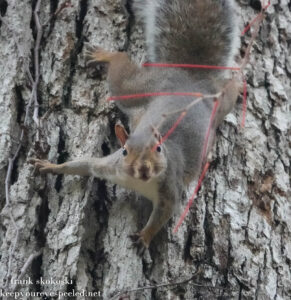
There was a lot more color in the wetlands this week. 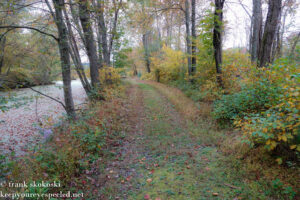
Many of the trees were donning their Fall colors. Most of the bright yellow color in the woodlands was provided by the leaves of the northern spicebush.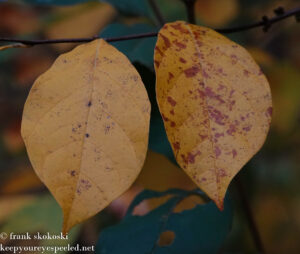
These small shrubs and trees produce bright red berries that are eaten by the birds migrating through the wetlands and the birds that remain during the Winter. 
These bright red berries look similar to the spicebush berries but are produced by the common winterberry shrub. They also provide food to the birds and wildlife in the wetlands,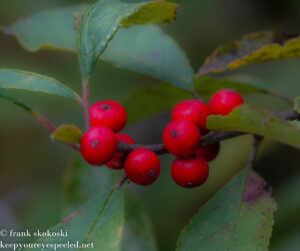
as do these roundleaf greenbrier and
The many species of Fall asters also provided some color to the wetlands including these calico asters, 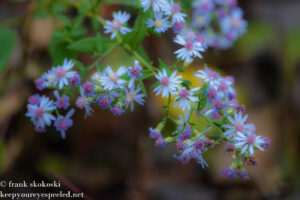
As I continued my walk, the sounds of the flocks of migrating birds singing in the surrounding trees continued.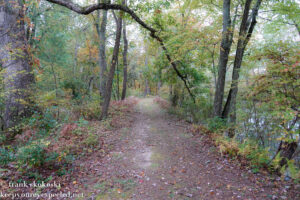
On the trail, as I hiked toward the river lands section of the nature preserve, I found some honey mushrooms ( we call them popinkies or stumpers here in coal country) growing right on the path. I have been finding these delicious mushrooms everywhere in Northeastern Pennsylvania this year. I left them with the intention of picking them on my return hike. 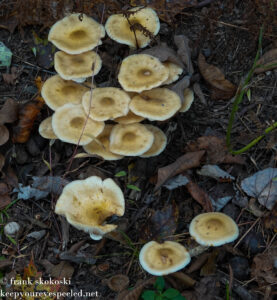
There was also black staining polypore mushroom growing along the trail,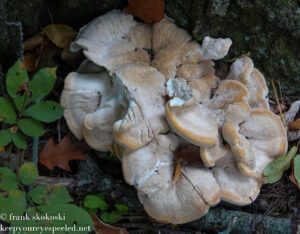
and these brick top mushrooms, both of these species are edible. It has been an amazing year for wild mushrooms, because of the abundant rainfall and warm temperatures, by far the best year I have ever experienced. 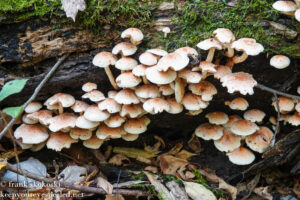
I left the wetlands, and before I walked into the river lands section of the nature preserve, I followed the access road to the river. There is a wetland to the right of the road and here I again saw a lot of birds, some migrating such as this cedar waxwing that were feeding on Asiatic tearthumb berries,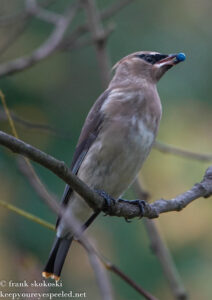
and some year long residents, like the song sparrows and 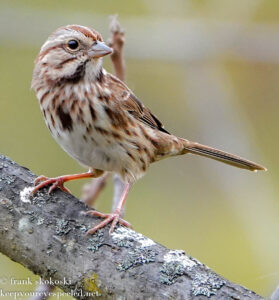
field sparrows. Some of the birds in their northern range migrate south but most of our birds remain here in the winter. 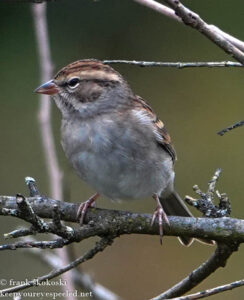
I also saw this house wren in the wetlands near the river. 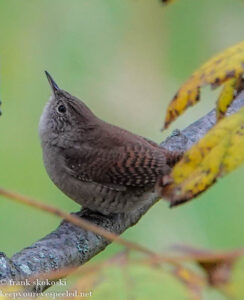
There were no water birds on the Susquehanna River so I walked into the river lands and along the trail between Lake Took-A-While and the old Susquehanna canal. 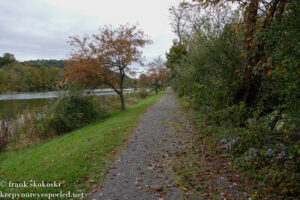
I saw a great blue heron across the lake,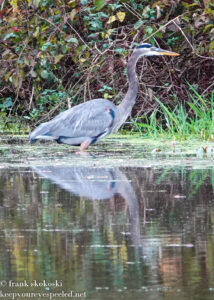
and was happy to see, and be able to photograph this belted kingfisher also perched in a tree across the lake. Both of these birds will remain near the lake until it freezes over in the Winter. Then, depending on how cold it gets, they will either move to the Susquehanna River or fly further south to warmer waters. 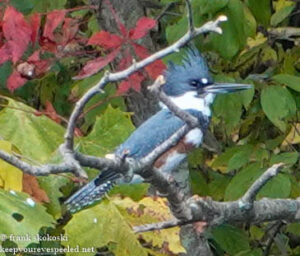
In the woodlands along the canal I saw a few northern cardinals. 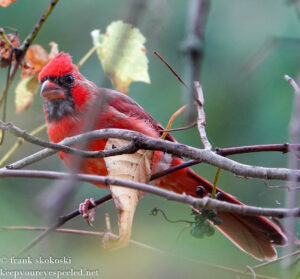
A migrating turkey vulture flew overhead.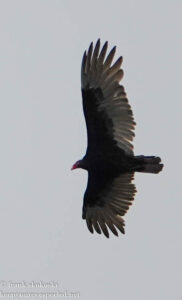
I only walked half way along the shores of the lake this week, since did more hiking in the wetlands.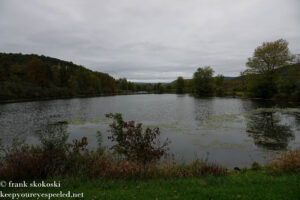
I didn’t see any water fowl or any of the large flock Canada geese that have lived here all Summer. However, I did see about a dozen Canada geese on the grass of the nearby picnic area. I am not sure if they were the local geese or a flock migrating south that stopped for a rest and some fresh grass for breakfast. 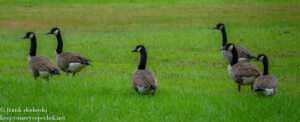
After seeing the geese I began my hike back to the wetlands. I saw another blue heron, and many of the migrating birds that still fluttered in the trees and filled their air with their much missed songs. 
Along the way I saw a few more sign of the advancing Fall, these milkweed pods that have gone to seed,
and the bright red leaves of the Virginia creeper vines. 
I only saw a couple of new birds, this northern flicker,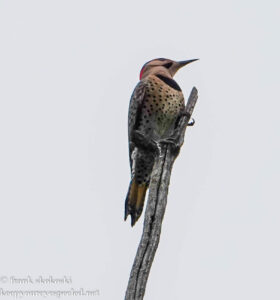
and this downy woodpecker. Here is a link to a gallery with more photographs of the birds I saw on from my hike in the wetlands and river lands. Susquehanna Wetlands birds October 11 2021. 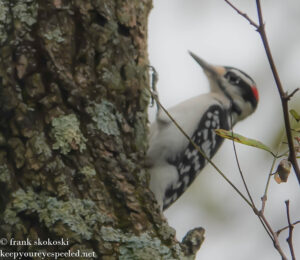
Back in the wetlands I was surprised when to find that the flocks of migrating birds had gone. It was eerily quiet again. I fear this will be the last day I hear bird song in the wetlands this season. I also found something else missing, the honey mushrooms that were growing on the trail. They were gone. Someone harvested them! It looks like I am not the only wild mushroom hunter that walks in the wetlands. 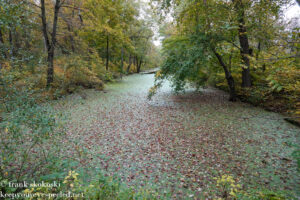
Once again I looked for the river otter, muskrats, wood ducks and other critters. I didn’t see them but I was satisfied seeing the many migrating birds on this cloudy morning, and hearing their singing. I wish them Godspeed on their long journey to warmer climes. Here is a link to a gallery with more photographs from my hike in the wetlands and river lands on Sunday. Susquehanna Wetlands October 11 2021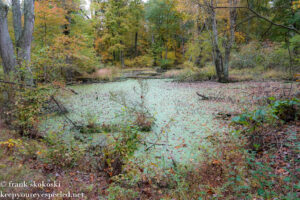
“To the Indians it seemed that these Europeans hated everything in nature – the living forests and their birds and beasts, the grassy grades, the water, the soil, the air itself.”
Author: Dee Brown
Categories
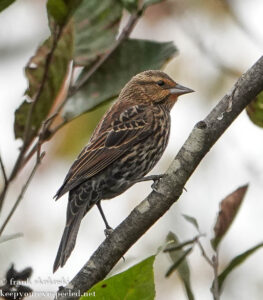
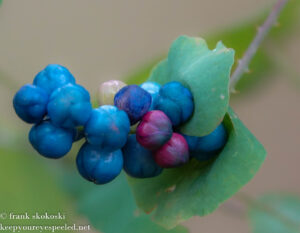
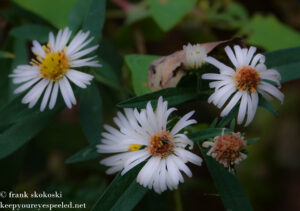
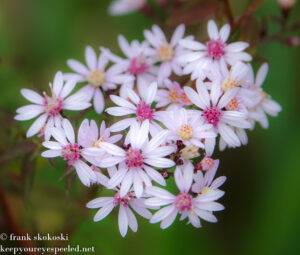
Recent Comments